Coffee Basics
Managing Coffee Poops: Tips And Factors

Coffee is a popular drink for many people. The smell of freshly brewed coffee in the morning is a great way to start the day. However, some may experience digestive issues after enjoying their favorite beverage. Don’t worry, there are ways to deal with this problem.
While some may argue that giving up coffee altogether is the best solution, I believe that it’s possible to enjoy coffee without the unpleasant side effects. As an avid coffee drinker, I’ve done my research and compiled a list of tips and factors to help manage coffee poops.
By making small adjustments to our coffee intake, choosing lighter roast beans, and incorporating more fiber into our diet, we can continue to enjoy our favorite beverage without the discomfort.
So, let’s dive in and explore how we can manage coffee poops.
Key Takeaways
- Reduce the amount and type of coffee consumed to manage coffee-induced bowel movements.
- Add milk or creamers to the coffee to reduce its effect on bowel movements.
- Choose lighter roast beans for more soluble fiber and drink water or herbal tea alongside coffee.
- Drinking decaf coffee may help reduce the frequency of bowel movements.
Coffee’s Effects on Digestion
I’ve learned that coffee’s effects on digestion are influenced by factors such as caffeine content, brewing method, and acidity, and it can cause frequent bowel movements.
The amount of caffeine in coffee varies depending on the kind of coffee, brewing method, and serving size. For example, espresso has 40-75 mg of caffeine per 1 oz, while drip coffee has 95-165 mg of caffeine per 8 oz. This difference in caffeine content can affect how the body reacts to coffee and its impact on digestion.
Additionally, the acidity in coffee can cause problems with digestion for some people. Low-acid coffee, on the other hand, can help with digestive problems. Over time, the body can develop a tolerance to coffee’s effects, but some people may be more sensitive to coffee’s impact on bowel movements.
Drinking decaf coffee may help reduce the frequency of bowel movements, but limiting coffee intake and paying attention to how the body reacts can also help manage its effects on digestion.
Managing Coffee-Induced Bowel Movements
Reducing the amount and type of my daily caffeinated beverage has proven to be an effective solution for lessening its impact on my digestive system. I’ve made dietary adjustments to alleviate coffee-induced bowel movements. Here are three tips that have helped me manage its effects:
-
Drinking water or herbal tea alongside coffee helps to dilute its impact on the digestive system.
-
Choosing lighter roast beans for more soluble fiber has also proven to be helpful.
-
Boosting my fiber intake by eating more fruits, vegetables, whole grains, and legumes has helped to regulate my bowel movements.
I’ve also found that adding milk or creamers to my coffee can reduce its impact on my digestive system. However, it’s important to note that everyone’s body is different, and what works for me may not work for others. It’s important to pay attention to how your body reacts to coffee and adjust accordingly.
Overall Considerations
Considering the various factors that affect coffee’s impact on digestion, it is important to find a balance that works for my individual body. While frequent bowel movements from drinking coffee may not be a cause for concern, it is still important to maintain good hygiene and consult a healthcare professional if symptoms persist or are severe.
To help manage the effects of coffee on digestion, I have found it helpful to pay attention to the type and amount of coffee I consume. I also make sure to stay hydrated by drinking water or herbal tea alongside my coffee, and I try to incorporate fiber-rich foods into my diet. By taking these steps and being mindful of my body’s reactions, I am able to enjoy my coffee without experiencing excessive bowel movements.
Factors Affecting Coffee’s Effects on Digestion Effects of Coffee on Bowel Movements Caffeine content varies with kind, brewing method, and serving size Drinking coffee can cause frequent bowel movements Espresso has 40-75 mg of caffeine per 1 oz Over time, the body can develop a tolerance to coffee’s effects Drip coffee has 95-165 mg of caffeine per 8 oz There are no health risks associated with coffee causing excessive bowel movements Instant coffee has 30-90 mg of caffeine per 8 oz Limiting coffee intake may help reduce bowel movements Decaf coffee has 2-5 mg of caffeine per 8 oz Other factors such as diet and stress can also affect bowel movements
In addition to managing my coffee intake, I also make sure to take hygiene precautions to prevent any potential health issues. This includes washing my hands thoroughly before and after using the restroom, as well as maintaining good bathroom hygiene practices. If I experience any persistent or severe symptoms related to coffee consumption, I know that it is important to consult with a healthcare professional for further guidance.
Frequently Asked Questions
Is it possible to completely eliminate coffee-induced bowel movements?
I’m afraid it’s not possible to completely eliminate coffee-induced bowel movements. However, switching to coffee alternatives like tea or decaf may help reduce their frequency. Caffeine’s impact on gut health varies with the individual and type of coffee consumed.
Does the temperature of the coffee affect its effects on digestion?
The temperature of coffee can affect its effects on digestion. Hot coffee can increase bowel movements, while cold coffee may have a slower impact. Coffee roast can also impact bowel movements due to its fiber content.
Can adding sugar or sweeteners to coffee worsen its effects on digestion?
Adding sugar or sweeteners to coffee can worsen its effects on digestion by increasing the likelihood of bowel movements. Decaf alternatives may be a better option, as they have lower caffeine and sugar content.
How long does it typically take for the body to develop a tolerance to coffee’s effects?
It varies, but regular coffee drinkers may develop a tolerance to coffee’s effects on bowel movements over time. This can result in reduced caffeine sensitivity and fewer coffee-induced bowel movements.
Are there any natural remedies or supplements that can help alleviate coffee-induced bowel movements?
I have found that incorporating natural remedies and dietary changes can help alleviate coffee-induced bowel movements. Some options include probiotics, peppermint tea, and increasing fiber intake through fruits, vegetables, and whole grains.
Arf, an author and an innovative enthusiast of coffee, coffee alternatives, and tea, plays a crucial role as a contributor to the esteemed Cappuccino Oracle platform. Renowned for his curiosity and passion for these captivating beverages, Arf has carved out a unique space for himself in the world of exploration and writing. He realized that coffee, coffee alternatives, and tea are not mere drinks to keep one awake, but universes of flavors and stories waiting to be explored.
Arf’s articles for Cappuccino Oracle blend meticulous research with personal experiences, providing readers with an in-depth understanding of various types of coffee, coffee alternatives, and tea, along with their unique characteristics, cultures, and histories. His honest reviews and engaging narratives guide readers on their own journeys, helping them discover their preferences and find their perfect brew.
Coffee Basics
How Does a Coffee Maker Works

We are going to explore the exciting realm of coffee makers. Get ready to be amazed as we uncover the complex mechanisms of these incredible machines.
From the basic components and water heating mechanisms to the brewing process and the importance of filters, we will leave no stone unturned.
So grab a cup of joe and join us as we delve into the inner workings of how a coffee maker works.
Key Takeaways
- The coffee maker consists of basic components such as a water reservoir, heating element, filter basket, and carafe.
- The water is heated in the heating element to the desired temperature, and a temperature control mechanism maintains the desired temperature.
- The brewing process involves pre-infusion, extraction through hot water sprayed over coffee grounds, filtration, and temperature control for consistent flavor.
- The quality of filters and grind size play a crucial role in the taste and flavor of the brewed coffee.
Basic Components of a Coffee Maker
The basic components of a coffee maker include a water reservoir, a heating element, a filter basket, and a carafe. These components work together to ensure a smooth coffee-making process.
Coffee maker maintenance is crucial to keep these components in good working condition. Regular cleaning of the water reservoir prevents the buildup of mineral deposits, which can affect the taste of your coffee.
The heating element should be checked for any signs of damage or malfunction and replaced if necessary. Clogged filter baskets can lead to weak or bitter coffee, so it’s important to clean them regularly.
Troubleshooting common coffee maker problems involves checking for issues such as leaks, slow brewing, or uneven coffee extraction. By understanding and maintaining these basic components, you can ensure a consistently delicious cup of coffee.
Water Heating and Dispensing Mechanism
How does the coffee maker heat and dispense water?
The water heating and dispensing mechanism in a coffee maker involves a complex process that ensures the water is heated to the optimal temperature and distributed evenly for brewing.
When you pour water into the coffee maker’s reservoir, it’s drawn into the heating element through a tube using a water circulation system.
The heating element, usually a heating coil, heats the water to the desired temperature, typically between 195-205 degrees Fahrenheit.
The temperature control mechanism ensures that the water remains at the desired temperature throughout the brewing process.
Once the water reaches the desired temperature, it’s dispensed through a showerhead or spray nozzle evenly over the coffee grounds in the filter basket.
This allows for an even extraction of flavors and ensures a delicious cup of coffee.
Brewing Process and Extraction of Coffee
Our coffee maker’s brewing process and extraction of coffee rely on the precise combination of water, heat, and ground coffee beans. This intricate process involves several extraction techniques and careful control of the brewing temperature. Here’s a breakdown of how our coffee maker achieves the perfect cup of coffee:
- Pre-infusion: The brewing process begins with a short pause, allowing the coffee grounds to bloom and release their flavors.
- Extraction: Hot water is then sprayed over the coffee grounds, extracting the desired flavors and oils.
- Brewing time: The water and coffee mixture is allowed to steep for a specific duration, ensuring optimal extraction.
- Filtration: The brewed coffee passes through a filter, separating the grounds from the liquid.
- Temperature control: Throughout the brewing process, the coffee maker carefully maintains the ideal brewing temperature, ensuring a consistent and flavorful cup of coffee.
Importance of Filters in Coffee Makers
To understand the importance of filters in coffee makers, let’s explore how they contribute to the overall quality of your brew. The role of paper filters in coffee makers is crucial as they play a significant part in ensuring that your coffee tastes its best. Filters are responsible for removing unwanted particles and oils from the coffee grounds, resulting in a cleaner and smoother cup of joe. The impact of filter quality on coffee taste cannot be underestimated. A high-quality filter will effectively trap sediments and oils, preventing them from reaching your cup and imparting bitterness or unwanted flavors. On the other hand, a low-quality filter may allow these undesirable elements to pass through, leading to an inferior coffee experience. Therefore, investing in good quality filters is essential for achieving a delicious and enjoyable brew.
| Filter Quality | Impact on Coffee Taste |
|---|---|
| High | Cleaner, smoother, better taste |
| Medium | Acceptable taste |
| Low | Bitterness, unwanted flavors |
Understanding the Role of Grind Size
Grind size plays a crucial role in the brewing process of a coffee maker. It directly affects the taste and flavor of the coffee that’s brewed.
Here are some key points to understand the impact of grind size on the extraction efficiency:
- Size matters: The grind size determines the surface area of the coffee particles that come into contact with water during brewing.
- Flavor extraction: Finer grind sizes increase the extraction of flavors, resulting in a stronger and more intense coffee taste.
- Brewing time: Coarser grind sizes require longer brewing times to achieve optimal extraction, while finer grind sizes extract quickly.
- Extraction control: By adjusting the grind size, you can control the extraction process and fine-tune the flavor profile of your coffee.
- Consistency is key: Consistent grind size ensures even extraction and a balanced flavor in every cup.
Understanding the relationship between grind size and coffee flavor is essential for achieving the perfect brew with your coffee maker.
Frequently Asked Questions
How Much Coffee Should I Use in a Coffee Maker?
When it comes to brewing coffee, it’s crucial to consider the coffee measurements for optimal taste. Different brewing techniques require different ratios, but generally, a good starting point is using 1-2 tablespoons of coffee per 6 ounces of water.
Can I Use Instant Coffee in a Coffee Maker?
Sure, we can definitely use instant coffee in a coffee maker. The pros include convenience and speed, while the cons may be a compromise in taste and quality. It’s a trade-off, but it works.
How Long Does It Take for a Coffee Maker to Brew a Full Pot of Coffee?
The brewing time of a coffee maker can vary depending on several factors. These factors include the type of coffee maker, the size of the pot, the desired strength of the coffee, and the brewing method used.
Can I Use Tea Leaves Instead of Coffee Grounds in a Coffee Maker?
Using tea bags instead of coffee grounds in a coffee maker has pros and cons. The pros include convenience and variety, while the cons include potential flavor contamination and residue buildup.
Is It Possible to Make Iced Coffee Using a Coffee Maker?
Yes, it is possible to make iced coffee using a coffee maker. There are various iced coffee recipes and alternative brewing methods that can be used to achieve a refreshing and delicious cold coffee drink.
Conclusion
In conclusion, understanding how a coffee maker works involves grasping the intricacies of its basic components, water heating and dispensing mechanism, brewing process, extraction of coffee, and the importance of filters.
By comprehending the role of grind size, one can further enhance the flavor and quality of their brewed coffee.
Just as the saying goes, ‘A well-oiled machine,’ a coffee maker operates with precision and efficiency, ensuring a delightful cup of joe every time.
Justin is a seasoned author, coffee and tea enthusiast, and an essential member of the Cappuccino Oracle team. With a keen appreciation for the complexities of coffee, coffee alternatives, and tea, Justin has dedicated his professional career to exploring these realms and sharing his insights with readers worldwide.
Justin’s immersion in the world of coffee, coffee alternatives, and tea began at a young age, kindling a passion that extended beyond mere consumption. This love for these beverages led him to combine his talent for writing with his devotion to coffee and tea, bringing him to Cappuccino Oracle as a dedicated author.
Coffee Basics
How Can I Get Coffee Delivered

Do you find yourself frustrated with the long queues at the coffee shop every morning?
Well, we’ve got some exciting news for you! We’ve discovered a variety of convenient ways to have coffee delivered right to your doorstep.
From local coffee shop delivery services to online subscriptions and grocery store options, there’s a delivery method to suit every coffee lover’s needs.
Get ready to say goodbye to long queues and hello to the delightful aroma of freshly brewed coffee at home.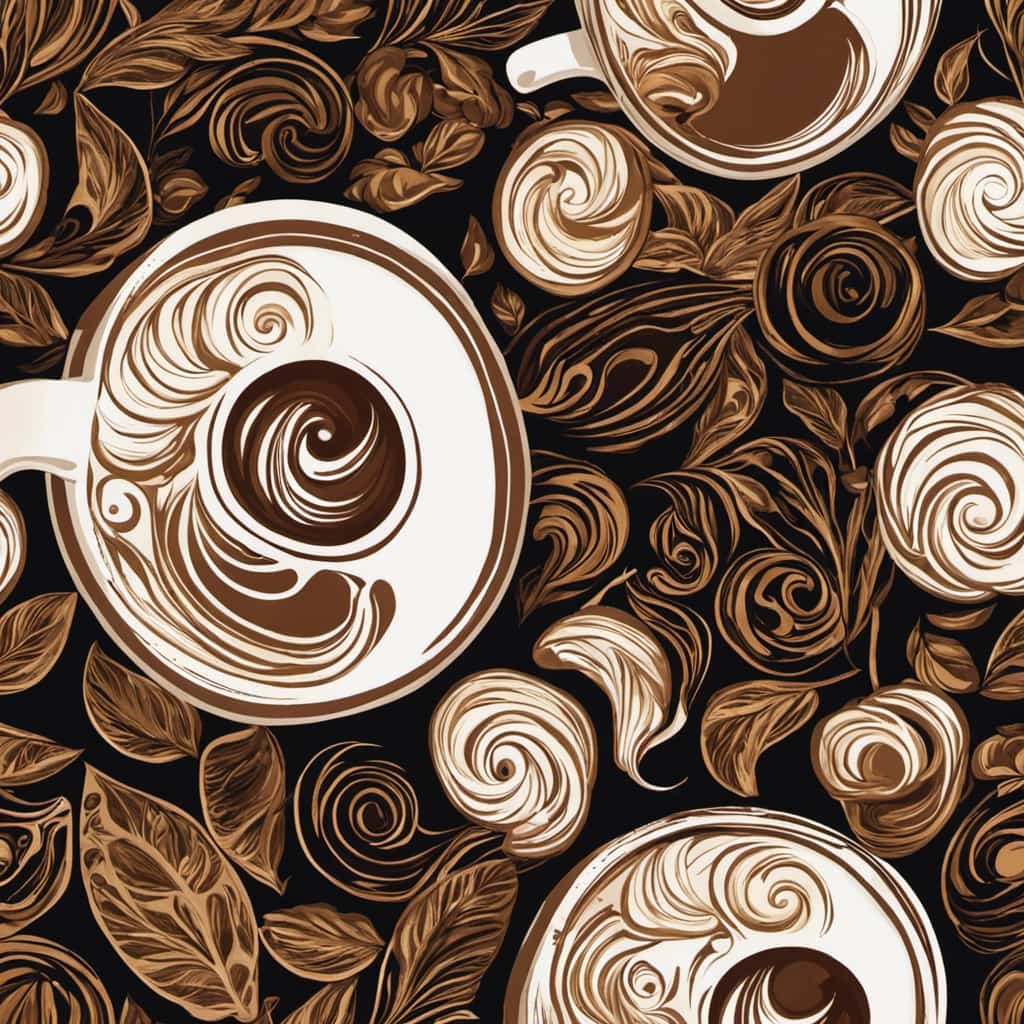
Key Takeaways
- Local coffee shops offer convenient delivery services through coffee delivery apps.
- Online coffee subscription services provide customizable options for coffee delivery.
- Grocery stores offer online ordering and delivery services for coffee.
- Food delivery apps offer a wide range of coffee delivery options from various coffee shops.
Local Coffee Shop Delivery Services
Our favorite local coffee shop, Joe’s Cafe, offers a convenient delivery service for all coffee lovers in the area. With the rise of coffee delivery apps, it has become easier than ever to enjoy your favorite brew from the comfort of your own home or office.
Joe’s Cafe has partnered with these apps to bring their delicious coffee straight to your doorstep. The pricing for their coffee delivery service is reasonable and competitive, ensuring that you can enjoy a fresh cup of joe without breaking the bank.
Whether you prefer a classic latte or a bold espresso, Joe’s Cafe has you covered. Simply download the app, browse their menu, place your order, and sit back as your coffee is delivered right to you.
It’s never been easier to satisfy your caffeine cravings.
Online Coffee Subscription Services
We love exploring different coffee options, and one convenient way to do that’s through online coffee subscription services. These services offer a variety of online coffee delivery options, allowing you to have your favorite beans or blends delivered right to your doorstep.
One of the benefits of coffee subscription services is the convenience they offer. You can choose the type of coffee you want, the frequency of delivery, and even customize your order based on your preferences. Additionally, many subscription services work directly with coffee roasters, ensuring that you receive fresh and high-quality coffee every time.
With online coffee subscription services, you can easily discover new flavors and expand your coffee palate without leaving your home.
Now, let’s move on to explore grocery store delivery options.
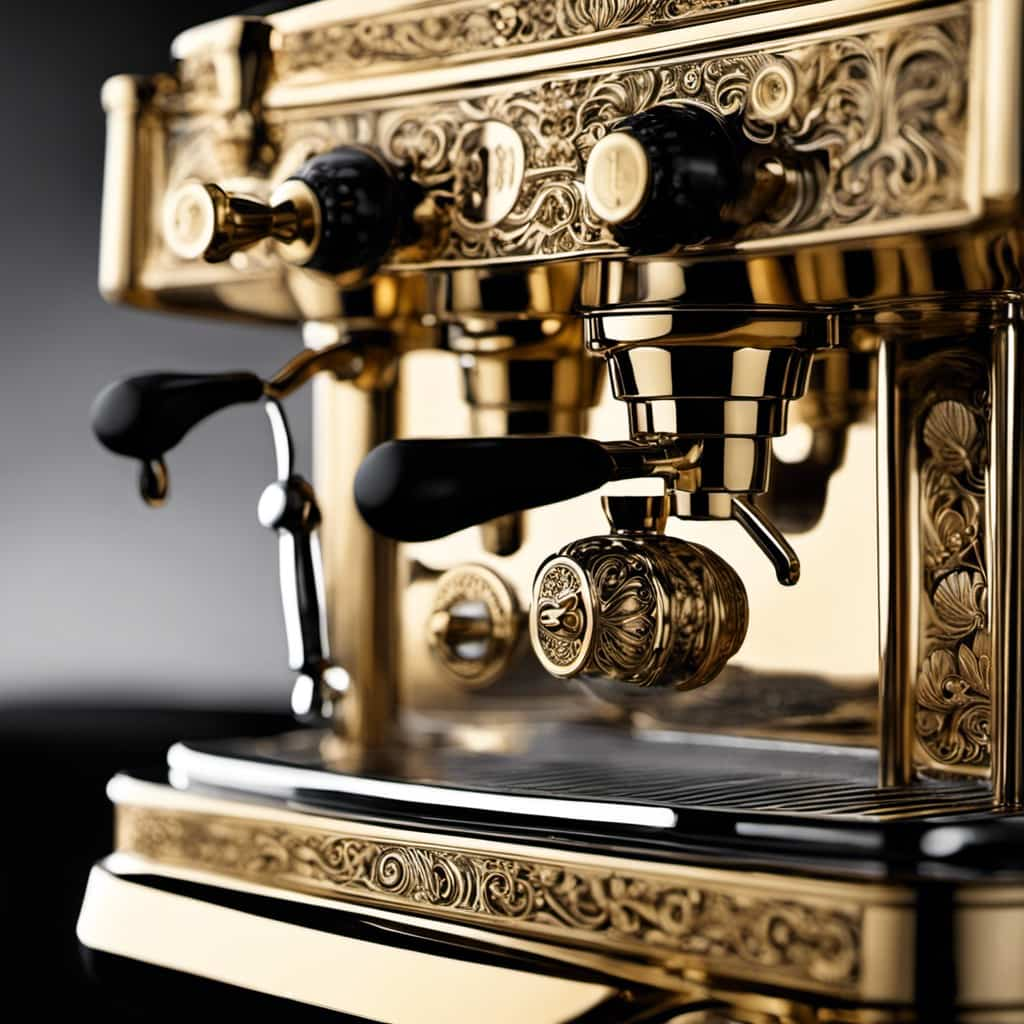
Grocery Store Delivery Options
Sometimes, grocery stores offer coffee delivery services that allow us to conveniently have our favorite beans or blends delivered right to our doorstep. Here are three grocery store delivery options to consider:
- Online Ordering: Many grocery stores now have websites or mobile apps where you can browse their coffee selection, place an order, and schedule a delivery. This option provides the convenience of shopping from the comfort of your home.
- Meal Kit Delivery: Some grocery stores offer meal kit delivery services that include coffee as part of their packages. These meal kits are designed to provide you with all the ingredients needed to cook a specific meal, and they often include coffee as a beverage option.
- Convenience Store Delivery: In addition to traditional grocery stores, some convenience stores now offer delivery services. These stores typically have a limited selection of coffee options, but they can be a convenient option for those who need their coffee fix quickly.
With these grocery store delivery options, you can easily get your favorite coffee delivered to your doorstep without having to leave the comfort of your home.
Food Delivery Apps That Offer Coffee
Continuing from the previous subtopic, we can explore the convenience of ordering coffee through food delivery apps.
These apps provide a wide range of coffee delivery options, allowing you to enjoy your favorite brew from the comfort of your home or office. Whether you prefer a classic cup of black coffee or a fancy espresso-based drink, these apps have got you covered.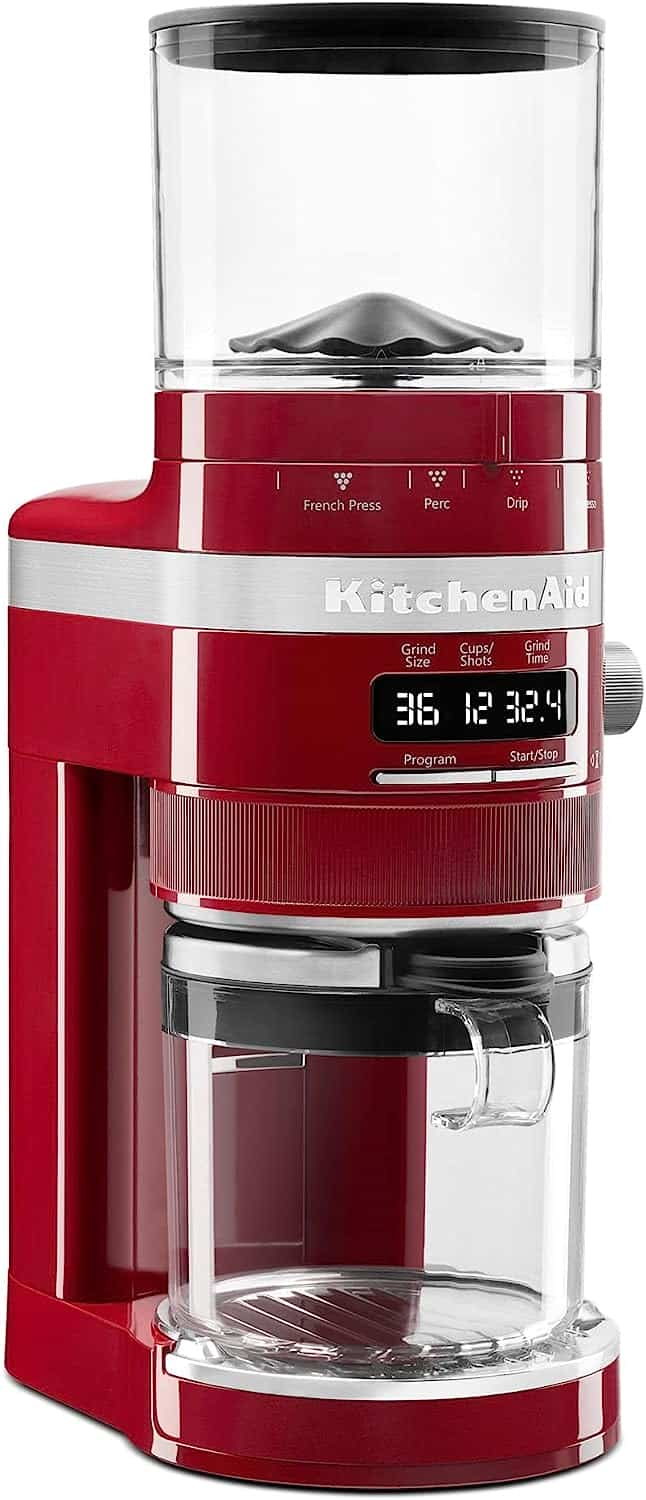
With just a few taps on your smartphone, you can browse through various coffee shops and choose your desired blend. However, it’s important to note that some food delivery apps may charge additional coffee delivery fees. Therefore, it’s advisable to check the app’s fee structure before placing your order.
Now, let’s move on to the next section where we’ll discuss specialty coffee roasters with nationwide shipping.
Specialty Coffee Roasters With Nationwide Shipping
Many specialty coffee roasters offer nationwide shipping for their unique blends.
Here are three specialty coffee roasters that prioritize direct trade coffee sourcing and single origin coffee beans:

- Blue Bottle Coffee: Blue Bottle Coffee is known for its commitment to sourcing high-quality, single origin coffee beans. They have a variety of blends and single origin options available for delivery nationwide. Their coffee is sourced through direct trade relationships, ensuring fair wages and sustainable practices.
- Intelligentsia Coffee: Intelligentsia Coffee is dedicated to sourcing single origin coffee beans directly from farmers around the world. They have an extensive selection of coffee beans, including limited edition releases and seasonal offerings. Their nationwide shipping allows coffee lovers to enjoy their unique blends no matter where they are.
- Stumptown Coffee Roasters: Stumptown Coffee Roasters sources their coffee through direct trade relationships with farmers. They offer a wide range of single origin and blended coffee options, all roasted to perfection. With nationwide shipping, customers can experience the exceptional taste of Stumptown coffee from the comfort of their homes.
These specialty coffee roasters provide coffee enthusiasts with the convenience of nationwide shipping while maintaining a focus on direct trade coffee sourcing and single origin coffee beans.
Frequently Asked Questions
Can I Customize My Coffee Order With Specific Flavors or Milk Options?
Yes, you can customize your coffee order with specific flavors or milk options. Our menu offers a variety of options for customized coffee flavors and milk preferences to satisfy your unique taste preferences.
Are There Any Discounts or Loyalty Programs Available for Regular Coffee Delivery Customers?
There are discount options and customer rewards available for regular coffee delivery customers. We offer a variety of discounts and loyalty programs to ensure that our customers feel appreciated and receive the best value for their coffee deliveries.
How Do I Ensure That My Coffee Will Be Delivered at the Right Temperature for Optimal Taste?
To ensure optimal taste, we recommend following best practices for storing coffee beans and using reputable coffee delivery services. This guarantees that your coffee will be delivered at the right temperature for a satisfying cup every time.
Can I Schedule Recurring Coffee Deliveries to Ensure I Never Run Out of My Favorite Brew?
To ensure scheduling convenience and never run out of our favorite brew, we can set up recurring coffee deliveries. This way, we can enjoy the taste of our preferred coffee without worrying about alternative options.
Are There Any Environmentally-Friendly Packaging Options Available for Coffee Delivery?
When it comes to coffee delivery, we prioritize sustainability. Rest assured, our service offers a range of eco-friendly options for packaging. We strive to minimize our environmental impact while delivering your favorite brew.
Conclusion
In conclusion, whether you’re craving a cup of joe in the comfort of your own home or need a caffeine fix delivered to your office, there are plenty of options available to get coffee delivered right to your doorstep.
From local coffee shops and online subscription services to grocery stores and food delivery apps, you can easily satisfy your coffee cravings without leaving your house.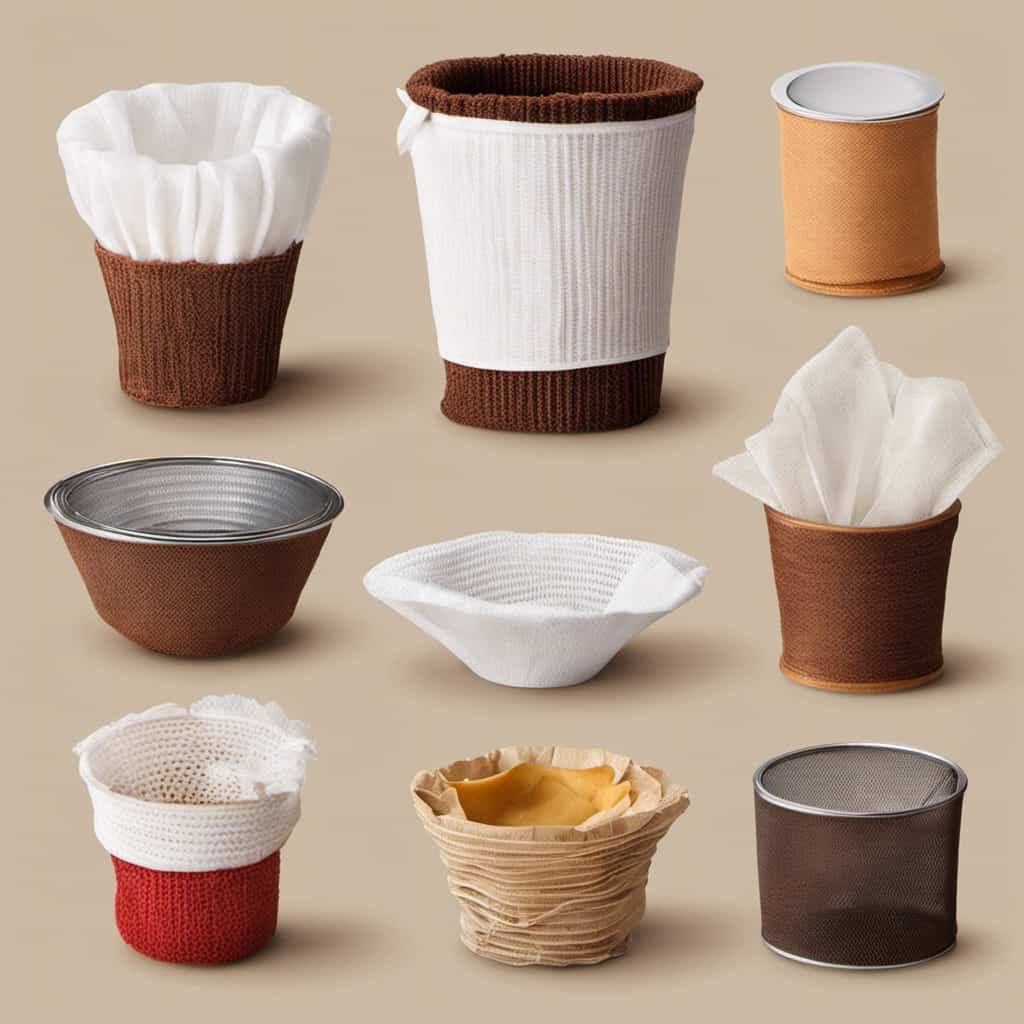
So why wait? Treat yourself to a piping hot brew and let the coffee come to you.
Justin is a seasoned author, coffee and tea enthusiast, and an essential member of the Cappuccino Oracle team. With a keen appreciation for the complexities of coffee, coffee alternatives, and tea, Justin has dedicated his professional career to exploring these realms and sharing his insights with readers worldwide.
Justin’s immersion in the world of coffee, coffee alternatives, and tea began at a young age, kindling a passion that extended beyond mere consumption. This love for these beverages led him to combine his talent for writing with his devotion to coffee and tea, bringing him to Cappuccino Oracle as a dedicated author.
Coffee Basics
Does Vanilla Bean Have Coffee

The enticing aroma of vanilla fills the air, tantalizing our senses and sparking intrigue. Exploring the realm of vanilla beans leads us on a quest to dispel a widespread misunderstanding.
Does this beloved flavor contain hints of coffee? Join us as we explore the origins, flavor profile, and chemical composition of vanilla bean.
Together, we’ll uncover the truth and settle the age-old question: does vanilla bean have coffee?
Key Takeaways
- Vanilla bean is derived from the orchid Vanilla planifolia, while coffee comes from the Coffea plant.
- Vanilla bean has its own distinct flavor profile, characterized by sweet and floral notes, while coffee has a rich and bold taste with hints of bitterness.
- Vanilla bean does not contain any coffee, and the misconception that it does is false.
- Vanilla bean is commonly used in baking and cooking to add a rich, sweet flavor to dishes, and it offers health benefits due to its antioxidant content.
The Origins of Vanilla Bean
Vanilla bean originates from the orchid Vanilla planifolia. This tropical orchid is native to Mexico and Central America. Vanilla bean cultivation requires specific growing conditions, including warm temperatures, high humidity, and well-drained soil. The plant typically grows as a vine, with long green stems that can reach up to 30 feet in length.
The vanilla bean itself is the fruit of the orchid, which is harvested when it reaches maturity. Historically, vanilla bean has been used for a variety of purposes. The ancient Mayans and Aztecs used it as a flavoring for their chocolate beverages, while Europeans later discovered its aromatic qualities and began using it in baking and cooking.
Today, vanilla bean continues to be a popular ingredient in a wide range of culinary creations, from desserts to beverages.
The Flavor Profile of Vanilla Bean
Why does vanilla bean have such a distinct and sought-after flavor?
The flavor profile of vanilla bean is characterized by its rich, sweet, and creamy taste. However, it’s the aroma of vanilla bean that truly sets it apart.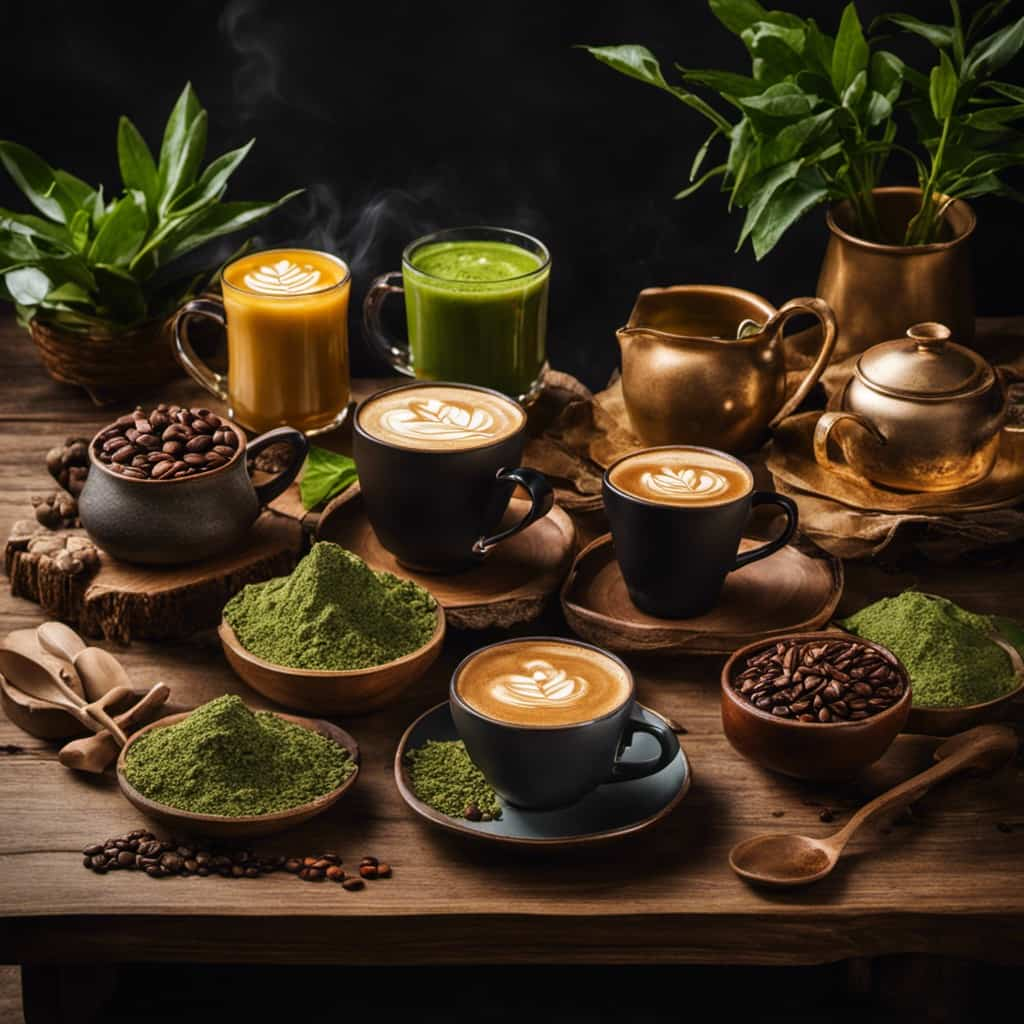
The beans emit a warm and inviting scent that’s often described as floral, with hints of caramel and chocolate. This unique fragrance adds depth and complexity to dishes, making it a popular ingredient in both sweet and savory recipes.
Vanilla bean is commonly used in baking, where its sweet and aromatic qualities enhance the flavors of cakes, cookies, and custards. It’s also used in beverages, such as coffee and cocktails, to provide a subtle and alluring aroma.
With its versatile and exquisite flavor profile, vanilla bean continues to be a staple in culinary creations.
The Common Misconception About Coffee in Vanilla Bean
Continuing our exploration of vanilla bean’s flavor profile, it’s important to address a common misconception about the presence of coffee in vanilla bean. Contrary to popular belief, vanilla bean doesn’t contain any coffee. This is one of the common myths surrounding vanilla bean that has been perpetuated over the years.
To clarify any confusion, here are some key points to consider:
- Vanilla bean is derived from the orchid plant, while coffee comes from the beans of the Coffea plant.
- Vanilla bean has its own distinct flavor profile, characterized by its sweet and floral notes.
- Coffee, on the other hand, has a rich and bold taste with hints of bitterness.
- While both vanilla and coffee are often used together in various recipes, they’re separate ingredients with unique properties.
It is important to debunk these misconceptions to ensure accurate information is shared about vanilla bean and its health benefits.
The Chemical Composition of Vanilla Bean
To understand the chemical composition of vanilla bean, we need to examine its unique blend of compounds. Vanilla bean contains a variety of compounds that contribute to its distinct flavor and aroma. One of the key compounds found in vanilla bean is vanillin, which is responsible for its sweet and creamy taste. Other compounds present in vanilla bean include eugenol, which gives it a subtle spicy note, and coumarin, which adds a hint of bitterness.
The extraction methods of vanilla bean involve soaking the beans in alcohol to release these compounds. In addition to its delicious taste, consuming vanilla bean has been associated with several health benefits. It’s rich in antioxidants, which can help protect against oxidative stress and inflammation. Furthermore, vanilla bean has been found to have potential anti-cancer properties.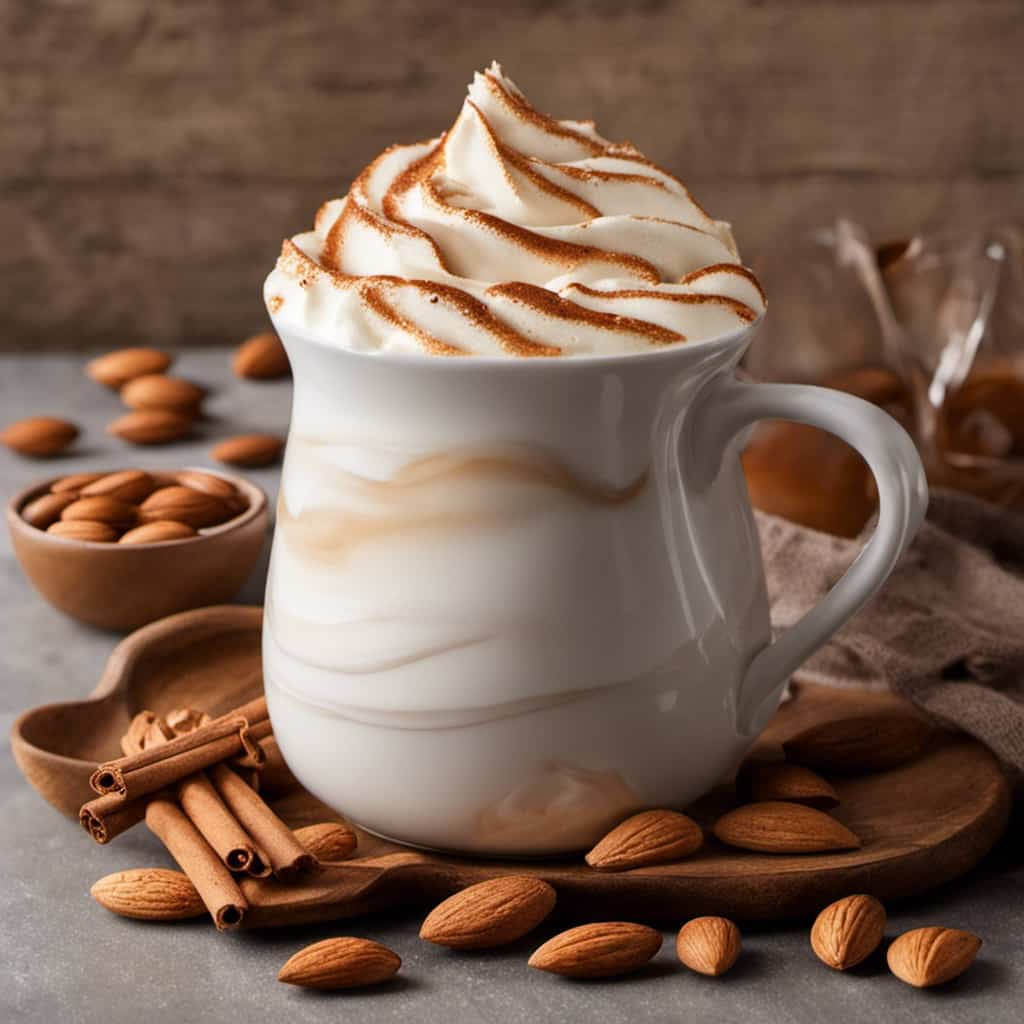
With its unique chemical composition and health benefits, vanilla bean is truly a remarkable ingredient. Now let’s move on to the next section to find out the verdict: does vanilla bean have coffee?
The Verdict: Does Vanilla Bean Have Coffee?
Now let’s determine whether or not vanilla bean contains coffee. Vanilla bean doesn’t contain coffee. It’s derived from the fruit of the vanilla orchid, and its flavor comes from the compounds found in the bean itself.
Here are some key points to consider about vanilla bean:
- Vanilla bean is commonly used in baking and cooking to add a rich, sweet flavor to dishes.
- It’s often used in desserts such as cakes, cookies, and ice cream.
- Vanilla bean has a natural fragrance and can enhance the aroma of baked goods.
- In addition to its taste and smell, vanilla bean also offers some health benefits. It contains antioxidants that can help reduce inflammation and improve heart health.
Frequently Asked Questions
How Is Vanilla Bean Grown and Harvested?
Vanilla bean farming techniques involve careful cultivation and harvesting. The process requires specific temperature and humidity conditions to ensure optimal growth. We use traditional methods to produce high-quality vanilla beans for various culinary purposes.
What Are the Different Types of Vanilla Bean Available in the Market?
Different flavors of vanilla bean are available in the market, each with its own unique taste and aroma. From Madagascar to Tahitian, these varieties can enhance a wide range of desserts and baked goods. Discover the best recipes using vanilla bean.
Can Vanilla Bean Be Used as a Substitute for Coffee?
Vanilla bean is a versatile flavoring agent that can be used in baking. It adds a rich, sweet taste to desserts and beverages. However, it does not contain coffee and cannot be used as a substitute for it.
Are There Any Health Benefits Associated With Consuming Vanilla Bean?
Vanilla bean is a versatile ingredient that can enhance the flavor of various recipes. Additionally, it is known for its potential health benefits and is commonly used in skincare products.
How Should Vanilla Bean Be Stored to Maintain Its Freshness and Flavor?
Storing techniques and preserving methods are important to maintain the freshness and flavor of vanilla bean. Proper storage in an airtight container, away from heat and light, will help preserve its quality for longer periods.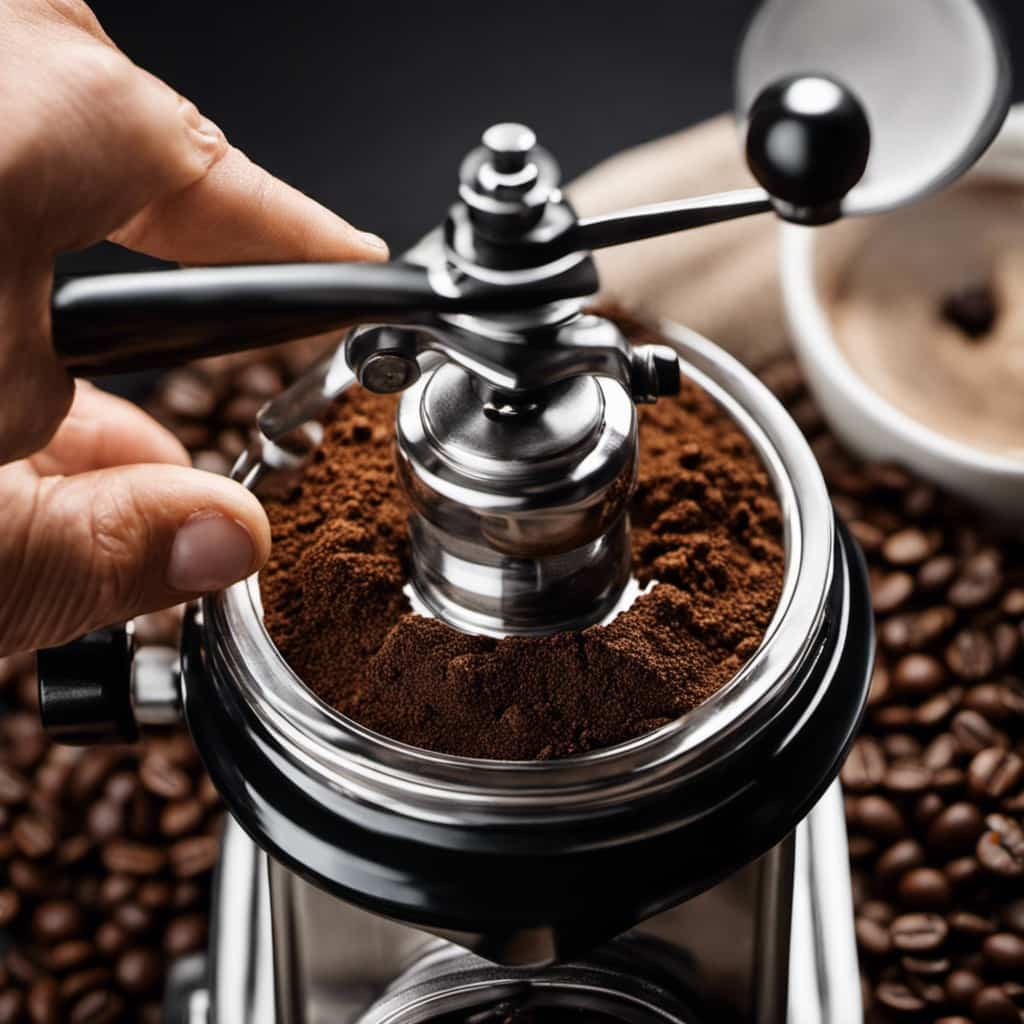
Conclusion
In conclusion, vanilla bean doesn’t have coffee. While both vanilla and coffee have distinct flavors and aromas, they come from different sources.
Vanilla bean is derived from the orchid plant, while coffee beans are the seeds of the coffee plant. Although they can be paired together in various culinary creations, vanilla and coffee are separate entities when it comes to their composition.
So next time you enjoy the rich and smooth taste of vanilla, remember that it’s all about the beans, but without the coffee.
Justin is a seasoned author, coffee and tea enthusiast, and an essential member of the Cappuccino Oracle team. With a keen appreciation for the complexities of coffee, coffee alternatives, and tea, Justin has dedicated his professional career to exploring these realms and sharing his insights with readers worldwide.
Justin’s immersion in the world of coffee, coffee alternatives, and tea began at a young age, kindling a passion that extended beyond mere consumption. This love for these beverages led him to combine his talent for writing with his devotion to coffee and tea, bringing him to Cappuccino Oracle as a dedicated author.
-

 Coffee Basics5 days ago
Coffee Basics5 days agoThe Ultimate Guide To Buying Nespresso Pods: Where And How?
-

 Coffee Basics1 week ago
Coffee Basics1 week ago11 Best Medium Roast Coffees For Your Perfect Cup
-

 Coffee Basics1 week ago
Coffee Basics1 week agoStarbucks Venti Drinks: Customization And Pricing Guide
-

 Coffee Basics4 days ago
Coffee Basics4 days agoPerfect Your Espresso With Puck Screens: A Barista’s Secret
-

 Cappuccino Oracle Selected Reviews2 days ago
Cappuccino Oracle Selected Reviews2 days agoSmeg Knife Block Review Review [2024]
-

 Coffee Basics7 days ago
Coffee Basics7 days agoWhat Is Half-Caff Coffee? (And How Much Caffeine Is In It?)
-

 Coffee Basics7 days ago
Coffee Basics7 days ago9 Best Ground Coffee Brands For Your Perfect Cup
-

 Coffee Basics14 hours ago
Coffee Basics14 hours agoCan I Drink Coffee After Botox















